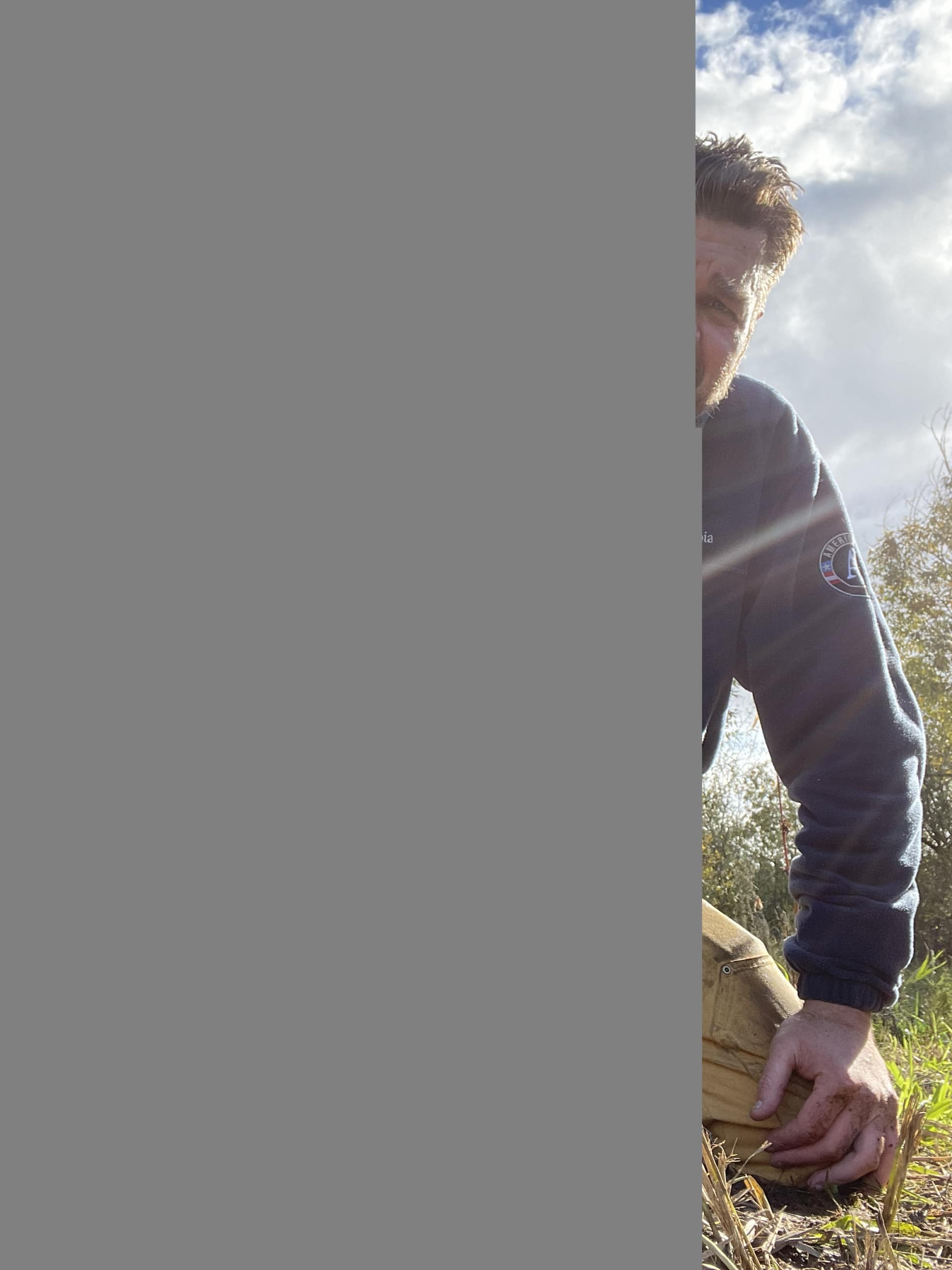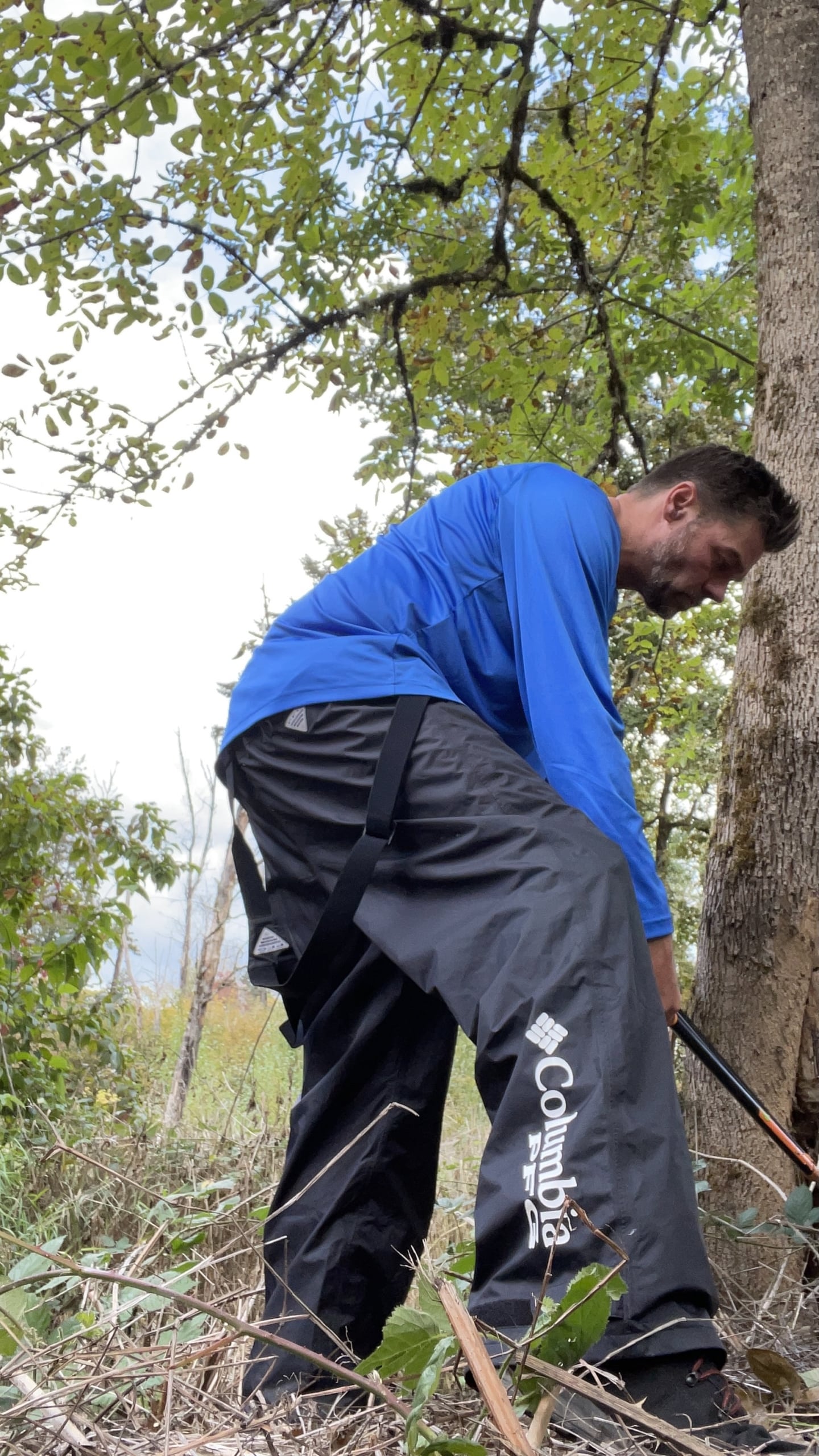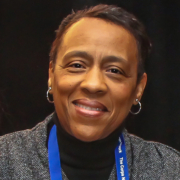
Mt. Adams Institute, based in Washington State, is one of several organizations that operates Corps programs focused on providing military veterans opportunities to build skills in resource management. Below, read our conversation with Christopher Sutherland, a U.S. Coast Guard veteran serving as an AmeriCorps member with the Mt. Adams Institute VetsWork Environment program.
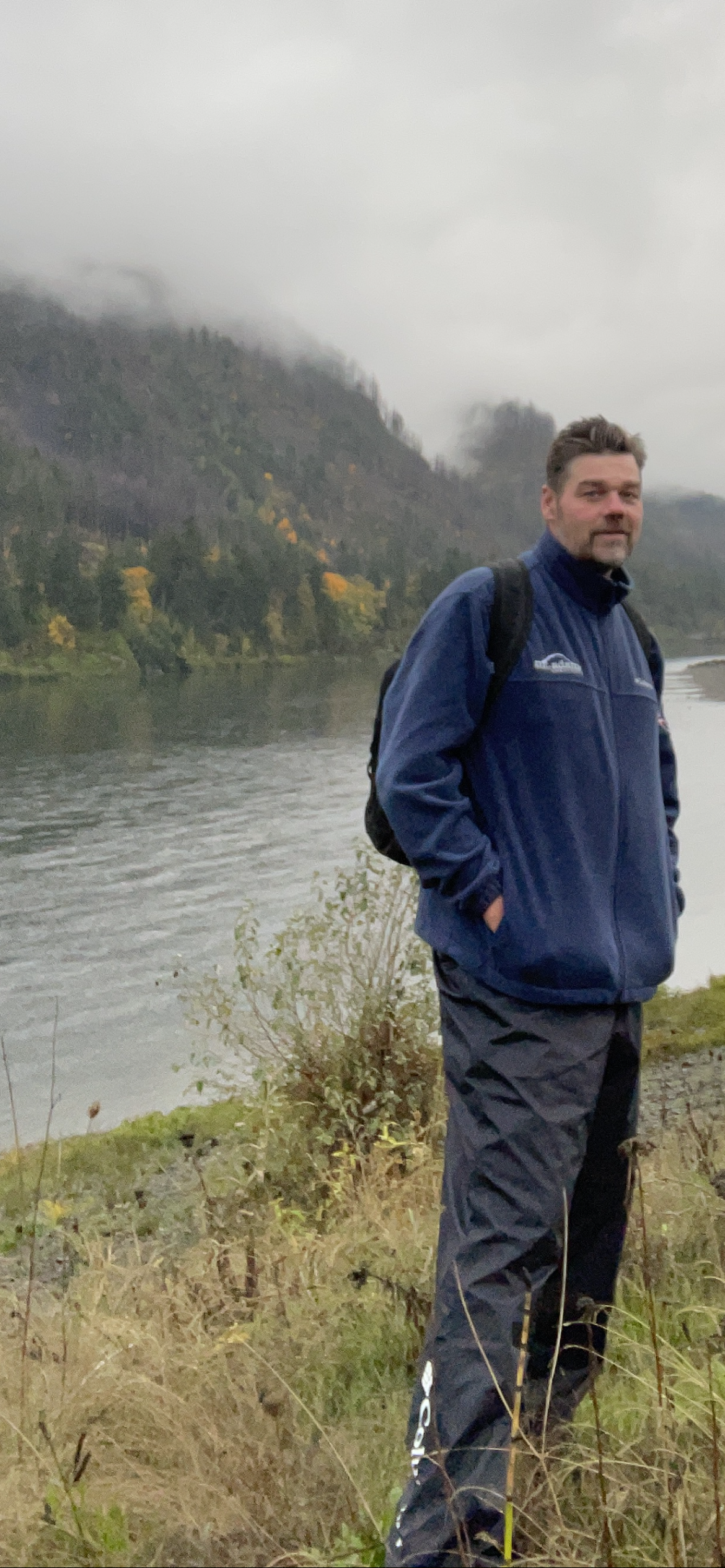 Where are you currently based?
Where are you currently based?
In Washington State, but I work with Lower Columbia Estuary Partnership, which is based out of Portland, OR.
One of the first jobs I had was with the California Conservation Corps. I’ve been working with programs like this for as long as I can remember. It seems like I do well in these types of programs.
Can you tell us a bit about your background?
I was born and raised in Northern California. I grew up in Santa Cruz and the Bay Area. I did a lot of surfing, a lot of hiking; spent a lot of time in the Red Woods in California. That’s where I really started to love the environment and working outdoors.
I went into the Coast Guard from there and moved around a lot, up and down the West Coast. I was on a ship; a lot of the work I did were patrols, basically from South America up to Alaska. I was a shipboard firefighter and a mechanic.
Then I spent time on the East Coast. My last billet with the Coast Guard, I was a lighthouse keeper in Boston at the first lighthouse in America, which was pretty cool. Being a lighthouse keeper was where I ended my billet in Massachusetts.
Then I moved back West. I started working in parks and recreation in Portland. I’ve just always been trying to keep my hands in the environmental field. I went from parks and rec in Portland into the Mt. Adams program and AmeriCorps. I’ve been with them for three years now. My first two terms for AmeriCorps were in Tillamook with an Estuary Partnership, doing a lot of similar work to what I’m doing now.
How did you first hear about the VetsWork program at Mt. Adams Institute? What made you want to join?
First, I’ve always liked doing environmental work. I’ve always wanted to work in parks and rec, or any kind of way I could get into outdoor projects. Of all things, I was just looking on Craigslist and I saw an ad for Mt. Adams Institute. I actually didn’t think it was real when I first saw it. But once I checked it out, I just thought, “Wow, I’ve been in the Coast Guard, I’ve been in the California Conservation Corps, I’ve always tried to work in parks and rec and I’ve done a lot of volunteering.” It just seemed like the right fit. I applied immediately. I’m more about the work and the mission than the pay. I just love doing this type of work.
What exactly were you doing before you enrolled in AmeriCorps? You mentioned you were doing parks and rec work in Portland?
Yes – It was a lot of maintenance work, cleaning up hazards. It was similar to the technician work I’m doing now, but I’d say more about park maintenance. And my background before that was mechanics and construction. In the Coast Guard I was a mechanic, but I was getting my firefighter qualifications. I wanted to be firefighter, but I took a pretty bad fall in the Coast Guard and injured my lower back, so that plan didn’t work out. But yes – I wanted to work outside and was doing that before I came here.
Can you share more about where you’re currently serving and your responsibilities?
My first two years with AmeriCorps were with Tillamook Estuaries Partnership, or TEP. A lot of it – and a lot of what I do now – was based on water quality and waterway restoration and improving salmon passage. A lot of planting along waterways and creeks. A lot of blackberry removal, ivy removal, anything that is preventing natives from growing healthy and strong along creek sides. It’s a lot of digging in the dirt, a lot of getting wet in creeks, a lot of planting plants.
But there’s also an outreach side. We involve community members. We work with school-aged children. We work with different types of adult groups. There’s a lot of diversity in our outreach – we try to reach to a lot of different groups and get them out and give them a chance to help us with these projects.
And then there’s a technical side of the monitoring. We’ll go back and we’ll look at what we’ve planted and check on survivability. We’ll build monitoring wells where we’re testing the water for temperature, salinity, turbidity; we punch that into a spreadsheet for the scientists to use. It’s a lot of data collection.
Fish salvage is another cool thing we do. If we have to remove something that’s impeding a waterway, we’ll electroshock the water and we’ll rescue as much wildlife that’s in the creek as possible. Just recently I think we rescued about 45,000 lamprey in one creek, and we’ve rescued a lot of Coho. Salmon passage is such a huge thing, historically and in the present. Salmon is so important to Indigenous communities in the Northwest.
Tell us about your service after your AmeriCorps terms in Tillamook.
After two years in Tillamook, I applied for the Lower Columbia Estuary Partnership, or LCEP. Very similar work except this time I’m working along the Columbia River. I think we have projects along about 150 miles of the Columbia River.
One of the larger projects I’m working on right now is really close to my home. It’s about a thousand acres of restoration. There were levees that were impeding a creek that was flowing into the Columbia River. Again, it was a lot of culvert removals, a lot of planting over the creek beds, a lot of taking care of plants.
This past summer was ridiculous. We had 120-degree days out here in the Northwest, which is pretty bad considering it’s usually about 60 degrees. Our summer was spent doing a lot of plant care, a lot of watering and a lot of mulching and making sure everything we put in the ground is going to survive.
So yes – this is my third term. They hired me for a fourth. My current term ends in March. After March I’ll have another 11 months with Lower Columbia. They’re putting me on my own project and giving me some freedom to help lead at this one site. It’s going to be interesting. Pretty much everything I’ve learned and a lot of the stuff I’ve done, I’ll be able to put into practice in my own job site.
What are some of your favorite parts about this program? What are some of the challenges?
Aside from working outside, I’d say my favorite part is just doing what I’m doing. I feel like what I’m doing is important. Everybody has just as much of an important job as the next person. This isn’t just grunt work. This is a process and I like that every part of the process is appreciated and respected.
Some of the challenges? Weather. The sites are very muddy and wet. They’re uphill; they’re downhill. They’re rutty and full of holes. Physically, I’d say it’s a challenge. You’ve got to be prepared for that.
But it’s a very positive atmosphere. Very diverse. There are a lot of different people from a lot of different backgrounds. And it seems like everybody is onboard. I know we don’t live in a bubble – that’s not reality – but it does almost feel like you’re in this perfect bubble at work.
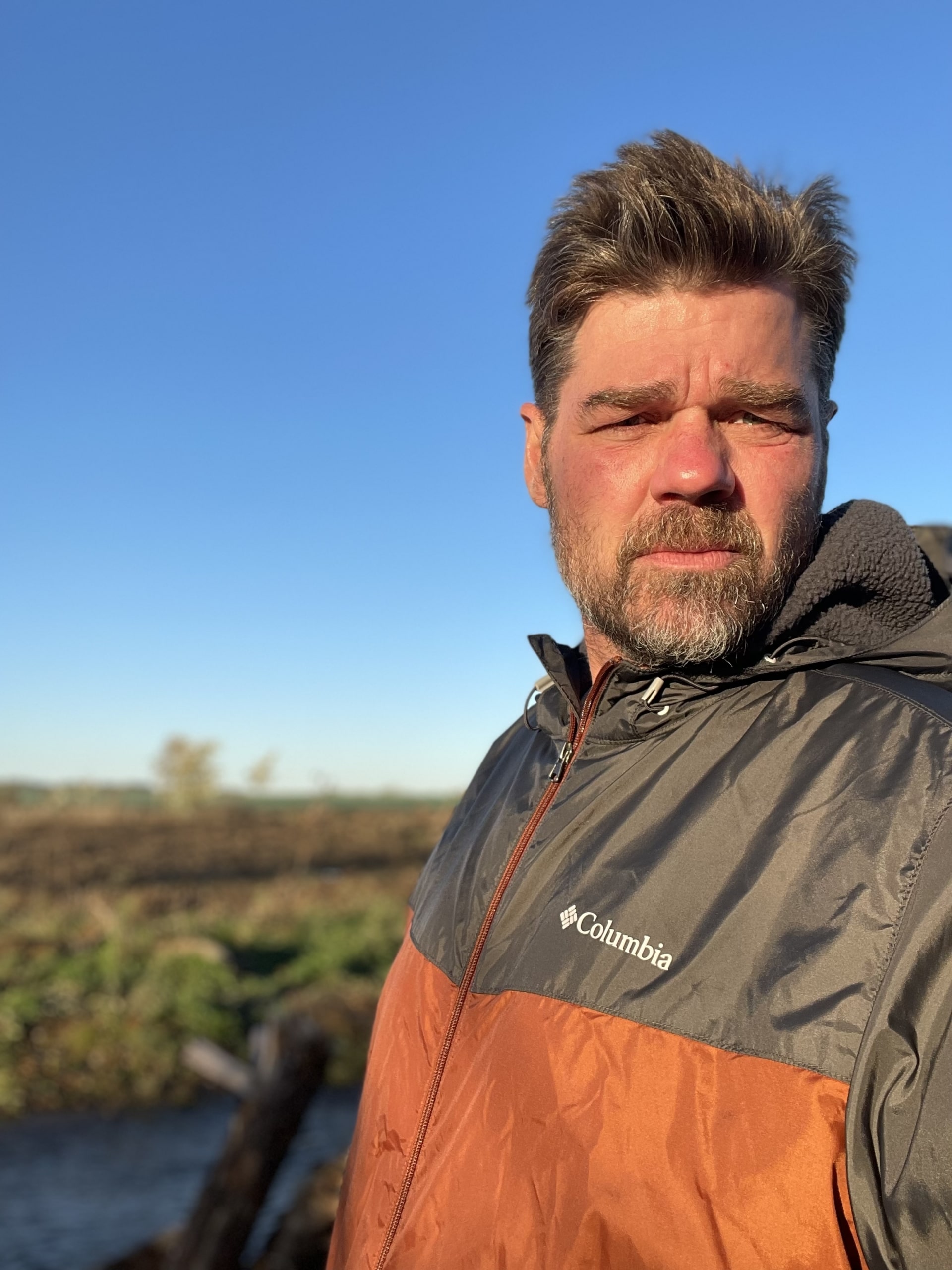 You mentioned you’re doing another term of service. What are your goals down the road?
You mentioned you’re doing another term of service. What are your goals down the road?
I want to take all this experience and, if not stay with Lower Columbia, I definitely want to stay in the environmental field. I think that’s going to be my pathway. I’ve got so much experience and learned so many different things over the past few years that it would be a waste to not pursue it.
What would you say to others who have separated from the military and are considering their next steps or a program like VetsWork? Do you have any advice?
I think most people who join the military need that type of structure. They need a cause. I don’t see this as really any different. And there are so many different sides to this work. It’s working with the Forest Service, it’s working for NOAA, it’s working with rocks and gems and geology, it’s working for all types of different environmental organizations. Just like the military, there are a lot of different things you can gravitate towards. There are plenty of positions with Mt. Adams and AmeriCorps that are so different from each other, but still within the same line of environmental service.
If they still want to feel like they’re doing something for their country or for the good of their neighbor, I’d say this is that kind of position. And there’s a lot of flexibility. I think Mt. Adams and even the places you serve, they understand what a lot of veterans have been through and they want to provide the best experience for the veteran. The program is designed for you, so it’s hard not to succeed. A lot of people have your back.


